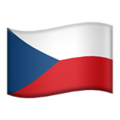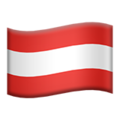University of South Bohemia in České Budějovice is a public university located in the city of České Budějovice (with branch campuses in Tábor, Vodňany, Nové Hrady) in the Czech Republic. Established in 1991, it has almost 9 000 students in more than 220 programmes including bachelor´s & master´s degrees as well as doctoral programmes and an academic staff 1 500. 592 students are currently enrolled in the university for their doctoral work.
The university was established on September 28, 1991, by an Act of Parliament, on the basis of two unrelated and independent institutions located in the city of České Budějovice. These two institutions, the Pedagogical Faculty (established in 1948 as a branch of the Faculty of Education of Charles University which subsequently became an independent faculty) and the Faculty of Agriculture (established in 1960 as part of the Prague University of Agriculture) were merged to form the university. Three additional faculties, the Faculty of Biological Science, Faculty of Theology, and Faculty of Health and Social Studies, were founded by the university academic senate in November, 1991. The Faculty of Arts was founded in 2006 and the Faculty of Economics was added one year later. In 2009, the Faculty of Fisheries and Water Protection was established.
CET has long been engaged in optical and X-ray methods for obtaining the geometry and internal structure of objects, with the possibility of measuring displacements and deformations of samples under load. The team has many years of experience in preparing and solving a number of research and project tasks, especially in the areas of material research and biomechanics. During the establishment of CET (supported by the European Regional Development Fund), a unique tomographic facility with two X-ray sources was built. Among other things, the CET workplace is equipped with a unique large-area X-ray pixel detector and a set of very fast spectroscopic pixel detectors. CET labs are equipped with many other instruments for non-destructive examination of materials (optical microscopes, electron microscope, and others).
The Research Group Computed Tomography in Wels currently has 16 staff members and 3 professors. In total, FHW has four powerful XCT systems: (1) for large parts and components (Rayscan 250E), 2) for high resolution scans up to 200 nm voxel size (Nanotom 180 and Easytom 160), and 3) for phase contrast imaging (Skyscan 1294). The main expertise of the CT Research Group involves the application of the latest CT-technologies in combination with advanced visualization techniques (e.g. virtual reality), image processing and CT simulation. Another focus is the development of quantitative CT methods for metrology and materials characterization for research and industry.
The Linz optical microscopy group led by FH-Prof. DI Dr. Jaroslaw Jacak currently consists of 10 project staff and 2 professors. It is equipped by two high-resolution fluorescent microscopes, 3 lithographic systems. Currently 5 national and international projects are underway.
Department of Biomedical Research which specializes in stem cell biology, biomaterial development, tissue engineering and imaging methods for imaging complex living cell processes. DUK maintains cell culture laboratories with flow cytometry, an extensive laboratory of molecular biology, a laboratory for biomaterial characterization, and sophisticated imaging methods. DUK has basic equipment with confocal laser microscope, plasmon resonance technology, electron microscope, micro particle analyzer and micro-CT. It also has access to a biomechanics laboratory.
- Associated equipment for surface electromagnetic radiation detectors and data processing therefor
- Micro- and nano-positioning optomechanical devices and their control
- Scientifically novel software tools for creating 3D tomographic maps from 2D detectors
- Optomechanics and instrumentation
- Microscopy and tomography of metal and non-metal materials for medicine and material research
- Microscopy of living cells and tissues





